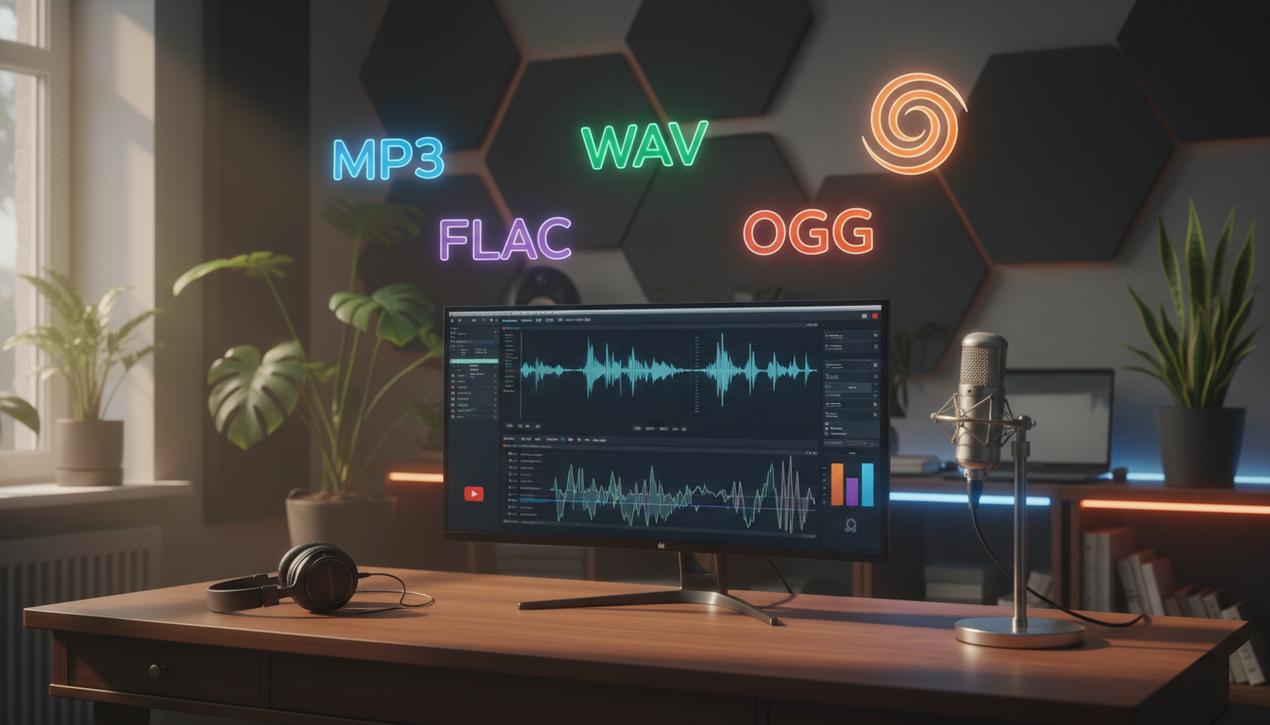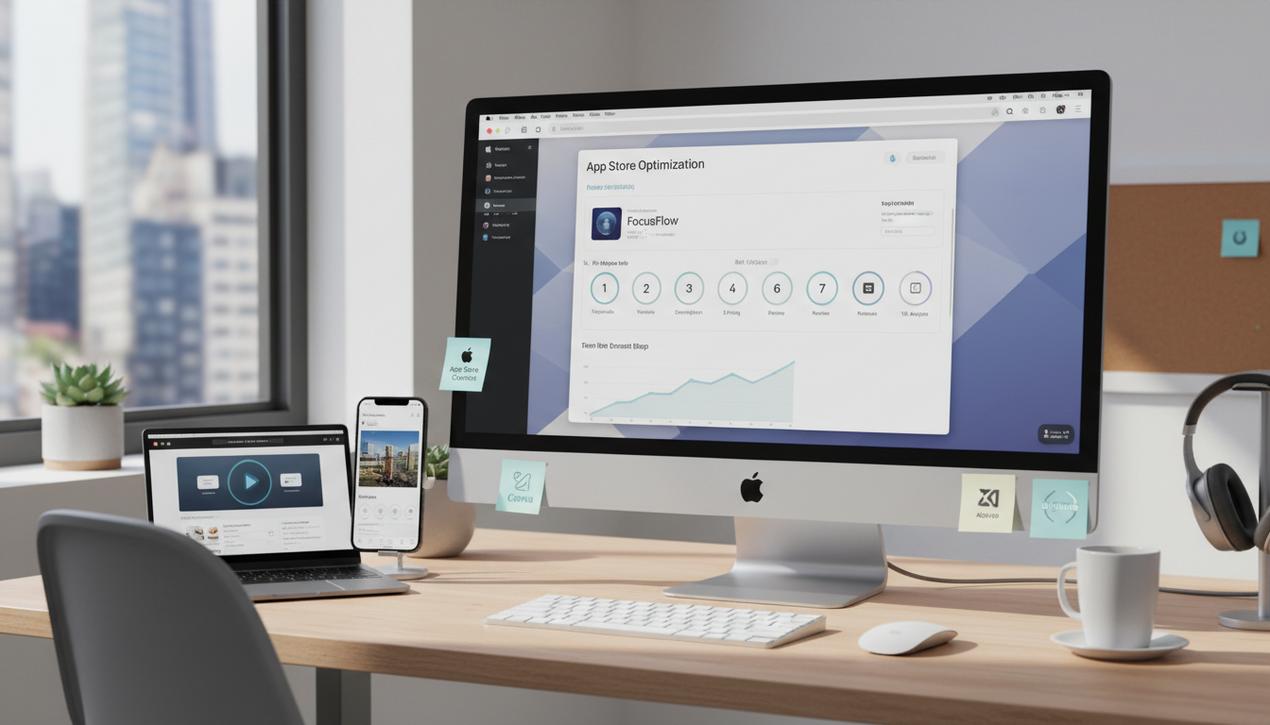Audio Formats 2025: A Complete Guide to Choosing


Audio has conquered the web. Whether for launching a podcast, embedding background sound on a website, or distributing music, audio has become a central element of the user experience, alongside powerful visual content. The digital audio market is projected to exceed $40 billion in 2025, driven by the explosion in streaming and podcasting, which now boasts hundreds of millions of monthly listeners worldwide. Amid this boom, a technical yet crucial question arises: which audio format should you choose? Between the crystal-clear quality of a WAV file, the universal compatibility of an MP3, and the efficiency of an AAC, the choice can seem complex. However, it is a decisive one. An unsuitable format can lead to endless loading times, disappointing sound quality, or compatibility issues, ultimately ruining your audience’s experience. This comprehensive guide explains everything you need to know to select the perfect audio format for your project, striking the right balance between quality, file size, and accessibility.
Understanding Audio Compression: The Key to Your Choice
Before comparing formats, it’s essential to understand the concept of compression. A raw digital audio file, like one from a studio recording, is extremely large. To make it easy to store and stream over the internet, we use compression algorithms called codecs. There are two main types of compression that determine the final quality of your audio.
Lossy Compression
This is the most common method on the web. As the name suggests, it permanently removes parts of the audio data deemed inaudible to the human ear to drastically reduce the file size. The stronger the compression, the smaller the file, but the more noticeable the quality loss.
- Advantages: Very small file sizes, fast loading times, ideal for streaming and mobile devices.
- Disadvantages: Irreversible loss of quality compared to the original source.
- Common Formats: MP3, AAC, OGG, WMA.
Lossless Compression
This method reduces file size without deleting any of the original recording’s data. It works much like a ZIP file: it optimizes how the information is stored but can restore the original file perfectly. The quality is therefore identical to the source, but the file size reduction is less dramatic.
- Advantages: Perfect sound quality identical to the original, ideal for archiving and audiophiles.
- Disadvantages: Files are much larger than their lossy counterparts.
- Common Formats: FLAC, ALAC.
Uncompressed Formats
This is raw audio, exactly as it comes from a recorder or music production software. These files contain all the sound information without any compression. They offer the highest possible quality but are extremely large, making them unsuitable for web streaming.
- Advantages: Maximum audio fidelity, the standard for professional audio work.
- Disadvantages: Prohibitively large file sizes for web use.
- Common Formats: WAV, AIFF.
The Top 6 Audio Formats Under the Microscope
Now that the basics are covered, let’s analyze the most popular formats in detail to help you make your choice.
1. MP3: The Universal but Aging Standard
MP3 (MPEG-1 Audio Layer III) is the format that democratized digital music. Its strength lies in its incredible compatibility; it can be played by virtually every device and software in existence. It is a lossy format, meaning the quality heavily depends on the bitrate chosen during encoding.
- Pros: Universal compatibility, very small file size, easy to create and share.
- Cons: Inferior sound quality compared to modern formats at the same bitrate, outdated compression technology.
- Best For: Podcasts, audio previews, or when maximum compatibility is the absolute priority.
2. WAV: Raw Studio Quality
Waveform Audio File (WAV) is the standard for uncompressed audio on Windows (its Mac equivalent is AIFF). It represents CD-quality audio with no alteration. It is the format of choice for professionals for recording, mixing, and mastering. On the web, its use is severely limited by its size.
- Pros: Perfect sound quality, no data loss, the benchmark format for production.
- Cons: Extremely large files, very long loading times, unsuitable for streaming.
- Best For: Providing source files to professionals, very short sound loops on a website.
3. AAC: The Modern Successor to MP3
Advanced Audio Coding (AAC) is a lossy format designed to be the successor to MP3. It delivers better sound quality at a similar or even smaller file size. It is the standard format used by Apple (iTunes, Apple Music), YouTube, and many major streaming platforms.
- Pros: Excellent quality-to-size ratio, more efficient than MP3, widely used on modern platforms.
- Cons: Slightly less universally compatible than MP3 on very old devices.
- Best For: Streaming, podcasts, online music. It is often the best all-around choice for the web in 2025.
4. FLAC: The King of Lossless
The Free Lossless Audio Codec (FLAC) is the leading lossless format. It can reduce an audio file’s size by 30-50% compared to a WAV file without any degradation in quality. As an open-source format, it has been widely adopted by audiophiles and high-definition music platforms.
- Pros: Perfect audio quality, significant space saving over WAV, open source and royalty-free.
- Cons: Files are still larger than MP3/AAC, not natively supported by older Apple devices (which prefer their proprietary ALAC format).
- Best For: Archiving a music collection, selling high-fidelity music downloads.
5. WMA: The Microsoft Alternative
Windows Media Audio (WMA) was developed by Microsoft as an alternative to MP3. It comes in both lossy and lossless versions. While it offers good compression quality, its main drawback is a lack of compatibility outside the Windows ecosystem, which has severely limited its adoption.
- Pros: Good compression quality, includes Digital Rights Management (DRM) capabilities.
- Cons: Very limited compatibility, often requires specific plugins or apps on non-Windows devices.
- Best For: Specific use cases within the Microsoft environment, but generally should be avoided for wide distribution.
6. OGG Vorbis: The Open-Source Champion
OGG is a container format that often uses the Vorbis audio codec (lossy). Like FLAC, it is open source and free from patents. It provides sound quality often considered superior to MP3 at an equivalent bitrate. It is notably the format used by Spotify for its streaming service.
- Pros: Very good audio quality, open and free format, effective for streaming.
- Cons: Less native device support than MP3 or AAC.
- Best For: Web streaming, video games, and projects that require a patent-free format.
Which Audio Format for Which Use Case in 2025?
There is no single “best” format. The ideal choice depends entirely on your project and priorities.
For a Podcast or Audiobook
The priority here is compatibility and a reasonable file size. The human voice does not require extreme fidelity.
- Choice #1: AAC. It offers better quality for voice than MP3 and is widely supported. A bitrate of 96 kbps is often sufficient.
- Choice #2: MP3. For maximum compatibility with all devices, even the oldest ones. Aim for a bitrate of 128 kbps.
For Streaming Music on a Website
Here, the balance between quality and loading speed is crucial, a challenge similar to video hosting.
- Choice #1: AAC. It is the de facto standard for major platforms due to its high efficiency.
- Choice #2: OGG. An excellent open-source alternative if you are primarily targeting desktop web browsers.
For Musicians and Audio Professionals
Quality is paramount.
- For Recording and Mixing: WAV (or AIFF). Only uncompressed formats guarantee a lossless workflow.
- For Archiving and High-Quality Distribution: FLAC. It preserves the original quality while saving precious storage space.
Choosing the right audio format is a strategic decision that directly impacts your audience’s experience. While MP3 remains a safe bet for its compatibility, 2025 trends show a clear shift towards AAC for its superior quality and efficiency in most web use cases. For projects demanding absolute fidelity, FLAC stands out as the undisputed reference. The key is to align your choice with your goals: are you aiming for the widest possible audience, the highest sound quality, or the best compromise between the two? By understanding the strengths and weaknesses of each format, you now have everything you need to ensure your audio content resonates perfectly with your listeners.




